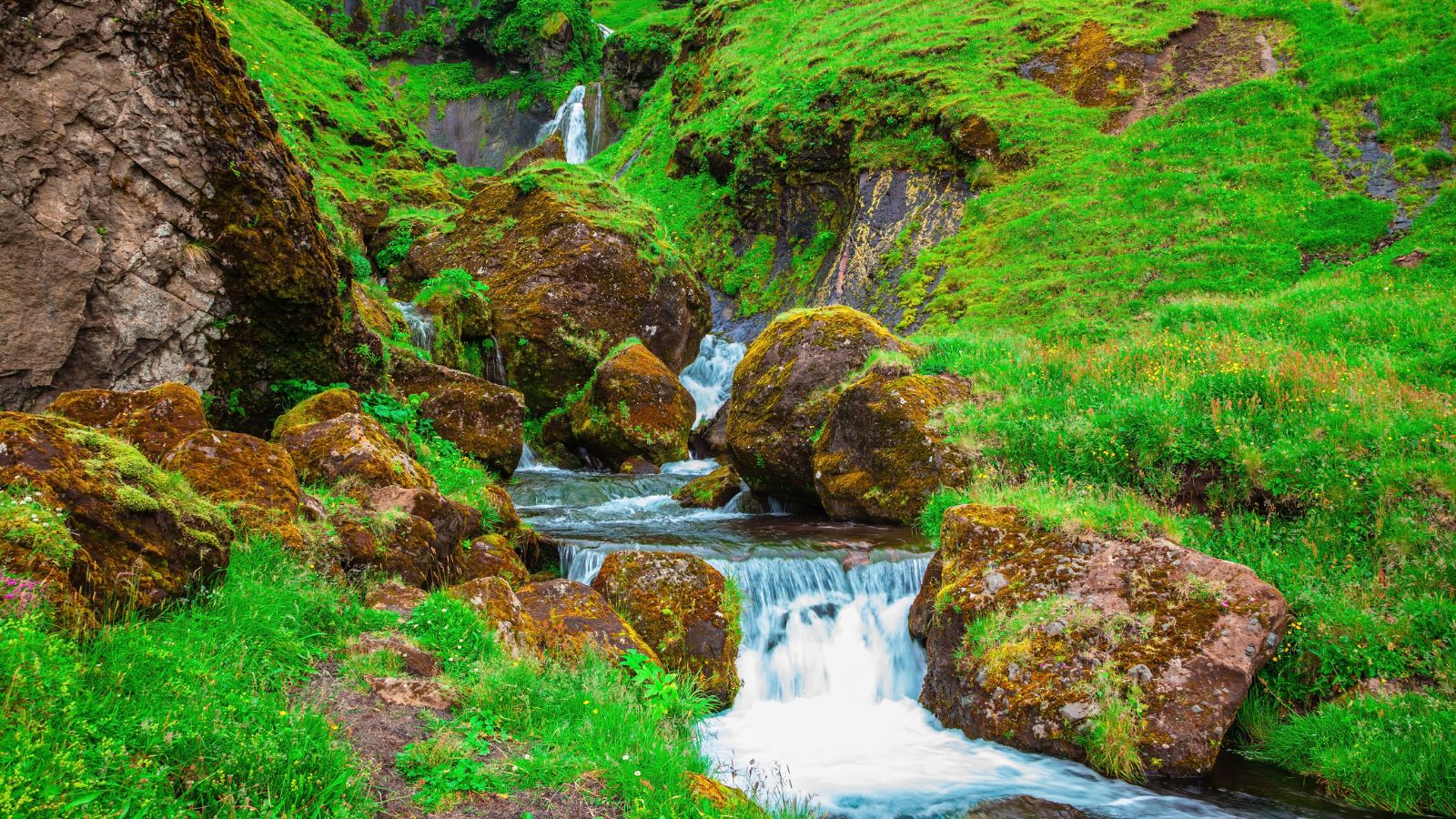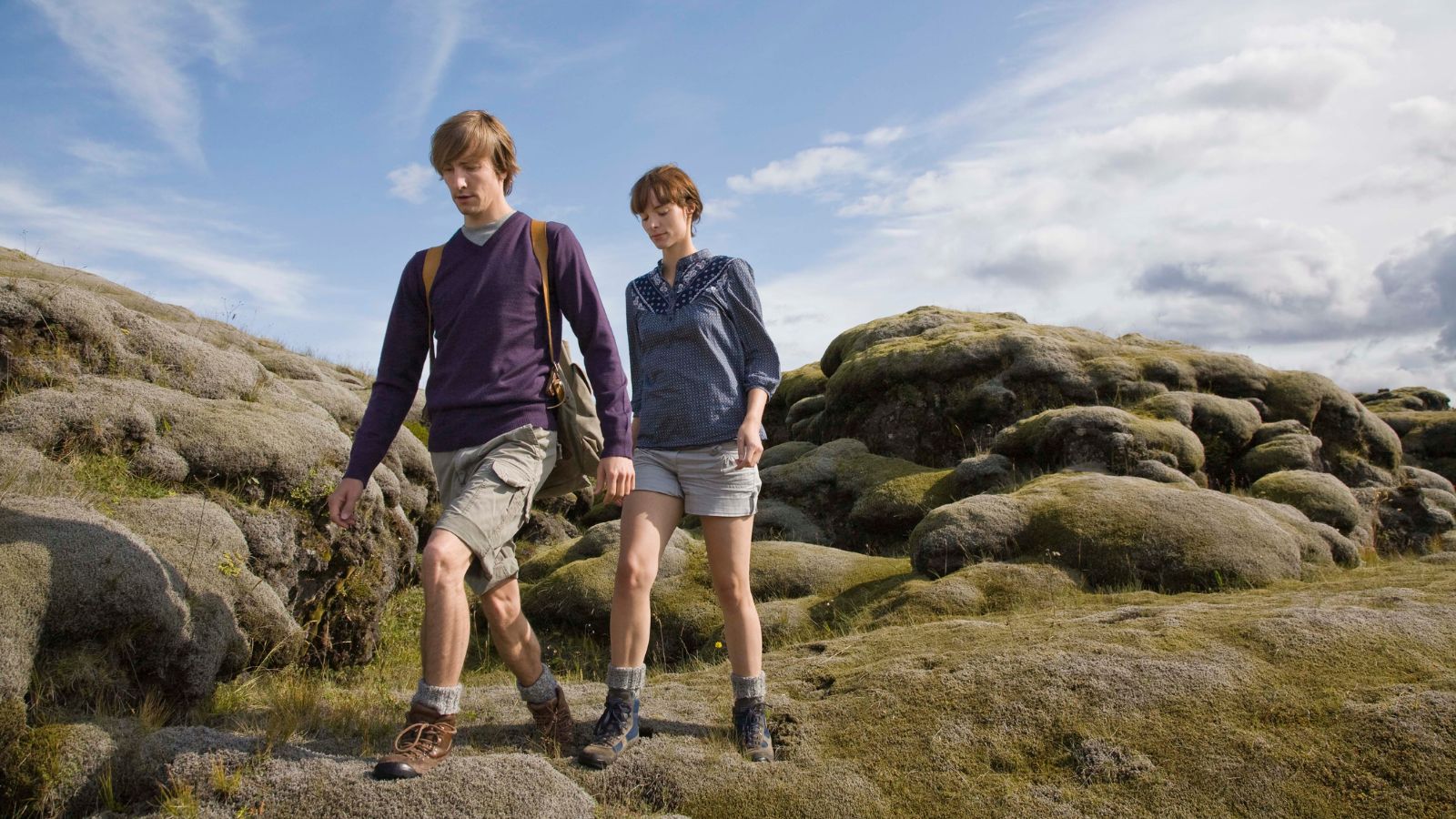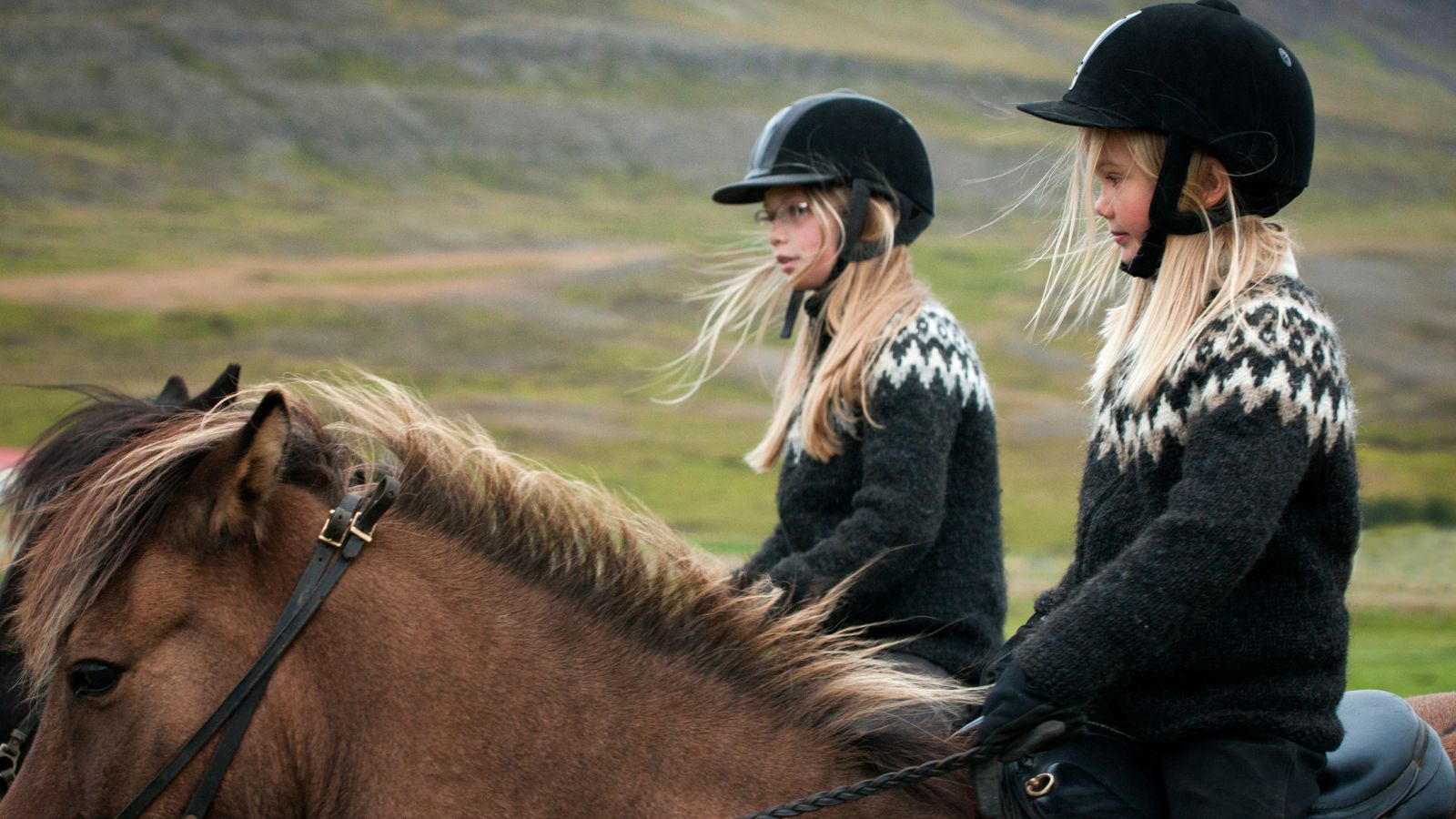July is one of the best and most popular times to visit Iceland, for these reasons and more. Let’s dive into what you need to know, from weather to what to pack.

Is July A Good Time To Visit Iceland?
July in Iceland is a great time to enjoy the best that the country’s summer has to offer. With mild temperatures, long daylight hours, and accessibility to just about every corner of the island, July draws travelers from all over the world hoping to explore the best natural attractions in the country. From road trips to hiking through the Highlands, there’s so much to experience in July in Iceland!
Read on for our top tips to help you prepare for your Iceland trip in July. As always, for the ultimate experience of freedom, we recommend that you hire a car and explore at your own pace.
Weather & Temperatures in Iceland During July
July sees some of the warmest and consistent weather conditions, making it a brilliant time to explore the country. Iceland is quite famous for its unpredictable weather, but July brings longer days, less rainfall, and warmer temperatures compared to other months. Here’s what you can expect in terms of weather and temperatures in July.
Iceland Temperatures in July
While you can never expect Iceland to get hot (maybe don’t look forward to sunbathing on a beach during this trip!), July is when you’ll expect the warmest and most comfortable temperatures of the year, though exact temperatures will vary based on a number of factors, including location.
- Reykjavík & South Iceland: Average highs of 12-15°C (54-59°F), with occasional peaks reaching nearly 20°C (68°F) on clear and sunny days.
- North Iceland & East Fjords: Typically slightly cooler, with average highs around 10-14°C (50-57°F).
- Highlands & Interior: Cooler than the rest of the country. Temperatures drop significantly, especially at night, often around 5-10°C (41-50°F).
At night, temperatures across the country rarely fall below 7-10°C (45-50°F), though the Highlands and remote areas can get colder due to higher elevation and open landscapes.
Rain & Wind in Iceland in July
- Rainfall: July is one of the driest months in Iceland, but light rain showers can still be expected, especially in the south and west regions of the country. You can expect between 8 and 12 rainy days in July, though showers are usually brief.
- Wind: Summer winds are milder than in autumn or winter, but coastal areas can still be breezy. The Highlands can also experience strong wind gusts, particularly in open, elevated areas.
Daylight Hours in July
Following the Midnight Sun at the end of June, July sees a great deal of sunlight hours, giving you all the more chance to explore Iceland around the clock.
- Early July: You can expect 22-24 hours of daylight. Even after sunset, it never feels completely dark and feels more like constant twilight. This makes July a great time for road trips, photography, and extended sightseeing.
- Late July: Sunsets start returning, with about 18-20 hours of daylight by the end of the month.
What to Do in Iceland in July
Like June, July is one of the best times to spot Icelandic wildlife. But in addition, it’s also just a fantastic time to experience and enjoy outdoor activities.

Hiking & Trekking
You can’t really beat July in terms of the best time to hike in Iceland. Some of Iceland’s most popular hiking destinations, like Thorsmork Valley and Landmannalaugar, are located within Iceland’s Highlands. This remote region of Iceland makes up the interior of the island and is crisscrossed by a network of gravel roads that are impassable during any time of the year other than summer. These roads, known as F-Roads, are most accessible in July, making it the perfect time to explore some stellar hiking locations.
Explore Iceland Via Road Trip
Iceland has built quite a reputation as an iconic road trip destination. From the Ring Road that encircles nearly the entire island, to the quick and accessible Golden Circle and even the remote northern Diamond Circle, there is so much open road to explore in Iceland!
Going on a road trip gives you the freedom to explore Iceland on your own agenda - see the sites that mean the most to you and pass over those that you’re just not interested in.
Reykjavík Fringe Festival
The Reykjavík Fringe Festival is a dynamic summer showcase of local and international artists, featuring theatre, dance, comedy, circus acts, poetry, drag, burlesque, and more. Held across the city, it’s a vibrant celebration of creativity and boundary-pushing performances.
Folk Music Festival in Siglufjörður
The Folk Music Centre in Siglufjörður brings Icelandic folk music to life through engaging videos of performers of all ages. Visitors can try traditional instruments like the Icelandic fiddle and langspil or simply enjoy the music over a cup of coffee.
The National Icelandic Horse Competition
The National Icelandic Horse Competition is held twice a year, bringing together the country’s top riders to showcase the unique Icelandic horse and its famed five gaits. Featuring events like tölt, pace racing, and dressage, the competition highlights the skill of both horse and rider.

What To Pack For Iceland In July
If you’re planning your visit to Iceland during July, you might be wondering just what to pack in your suitcase. While it is summer, shorts and t-shirts are unlikely to cut it here. Here are a few things to include in your bag.
- Layers: Iceland is famous for changeable weather conditions - sun one minute, rain the next, even in July! This means light layers, including base layers, mid layers, and warm outer layers. Never underestimate the wind in Iceland for bringing a chill!
- Waterproofs: It rains, even in summer in Iceland. This means waterproof jackets, trousers, and boots for outdoor activities in July.
- Warm Accessories: Don’t forget your extremities - your woolly hat and gloves won’t take up much room in your bag, but you’ll thank yourself if you need them!
- Sunglasses and Sunscreen: If you’re planning to explore Iceland’s most beautiful sights, make sure to pack sun protection, should the clouds part! This will be key to appreciating the magnificent scenery with glaring sun.
- Scarf or Windbreaker: Midges are common in some areas of Iceland during Summer, so you might want to bring something to cover your mouth to make yourself a little more comfortable if clouds of insects should appear.
Iceland in July FAQs
Can You See The Northern Lights in Iceland in July?
No, it’s not possible to see the Northern Lights in July. The aurora activity is lower during this time, and with the Midnight Sun meaning minimal darkness, it’s incredibly rare for people in Iceland to spot the lights during summer.
How Much Does It Rain In Iceland In July?
July is one of the driest months of the year in Iceland, with an estimated 50 millimeters (2 inches) predicted to fall across the month.
Are There Mosquitos In Iceland In July?
No, there are no mosquitoes in Iceland in July, or any other time of year. Due to Iceland’s climate, they cannot survive in the country.
Are There Midges In Iceland In July?
July is peak midge season in Iceland. These pesky insects are commonly found around lakes, rivers, and other bodies of water. Areas near waterfalls, including popular stops along the Golden Circle, are particularly known for having midges. When the weather is still, that is when it is prime for them. It’s a good idea to go prepared with a scarf and sunglasses to prevent irritation.
Now you’ve got all the information you need to create an unforgettable itinerary for your trip to Iceland in July! And we may be biased, but July is one of our favorite months of the year in Iceland! Speak to our team if you have any questions about hiring a car or visiting Iceland in general, or browse our range of cars to decide which is right for you.